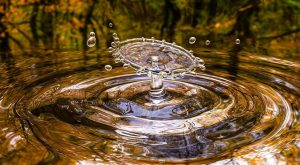 America has one of the most important water reserves in the world . But despite that, its distribution is uneven and it also has quality problems, that is, not all of it can be suitable for human consumption.
America has one of the most important water reserves in the world . But despite that, its distribution is uneven and it also has quality problems, that is, not all of it can be suitable for human consumption.
Amazon River
The area of Latin America and the Caribbean has 12 percent of the world’s territory, and is home to 8 percent of the population, but it has 30 percent of the fresh water that is available worldwide.
A study carried out by the University of Buenos Aires , through the Center for Transdisciplinary Water Studies , who analyzed the conditions of water for human consumption in Latin America; heralds one of its main problems: the average rainfall is 1,600 mm per year and it can be very scarce or very abundant. The Amazon is the largest river in the world, but the Río de la Plata, the Orinoco, the Paranaiba and the San Francisco also have more than considerable sizes. The average discharge in South America for the period 1921 – 1985 was estimated at 12,000 km2 per year. In the region there are very large and productive aquifers, lakes and reservoirs, but the high population density in certain areas and the lack of treatment of human discharges entail pollution problems.
In Latin America, the availability of fresh water in some countries and within them shows great heterogeneity. The possibility of access to drinking water is also uneven : in Latin America and the Caribbean, 26 million urban inhabitants and 51 million rural inhabitants lack drinking water services.
The legal definition of drinking water is to provide a list of compounds and associate them with a tolerable level . From a practical point of view, the amount of selected substances should be limited. In the laws of the different countries they are considered between 80 and 130, despite the fact that the number of synthetic compounds that man handles is greater than 70,000 and for many of them the degree of toxicity they have is unknown. In this way, even when a water can comply with the drinking water standards, it cannot be guaranteed that there is no other contaminant.
It is known that in many regions the water consumed comes from the same bodies of water in which sewage and industrial waste are dumped. Which has as a consequence the concentration of different polluting elements that far exceed the figures considered dangerous.
It is very important to promote sustainable water consumption , which is based on long-term planning of available water resources and which is a good supply of water qualitatively and quantitatively appropriate for development.
In addition to being a large aquifer reserve, wetlands are important ecosystems for hydraulic processes, since they make it possible to recharge aquifers, favor the mitigation of floods and coastal erosion.
